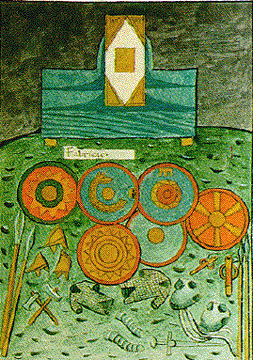 Contents -
Previous Article -
Next Article
Contents -
Previous Article -
Next Article
Other magistrates included the MAGISTRI MILITVM or Masters of Soldiers. There was MAGISTER MILITVM for each of the prefectures, or four large territorial divisions, of the empire. There was also a Master General In the Royal Presence, or MAGISTER MILITVM PRAESENTALIS, who was always close at hand to take care of military matters assigned him by the emperor. The COMES DOMESTICI was the magistrate in charge of administering the emperor’s household.
The cities of Rome and Constantinople had a special status within the Roman Empire. Since they were nominally the “Capitals” of the empire, each had a city prefect or PRAEFECTUS URBIS to serve roughly as Chief of Police.
The Consistory was an innovation in the Late Roman Empire to help the emperor to govern the huge politically and socially diverse territory under his control. Often, however, they spent much time trying to undermine each others’authority and gain wealth and power for themselves at each others’ expense than they did on government matters. Powerful members of the Consistory even ren the government in a de facto sort of way when there was a weak emperor on the throne.
The complex government bureaucracies of our own day are by no means a modern innovation. Roman bureaucracy became more complex and top-heavy as time went on, and began to consume an ever greater percentage of what the empire’s subjects produced. Like modern governments, the late Roman government returned little for its increased taxes except more and more complex laws and regulations that limited people’s freedoms even further.
One thing the Romans did to a much greater extent than we do today is use visual symbols to represent the powers and responsibilities of not only the powerful magistrates but the petty officials as well. In a society in which only the well - to - do could read and those who could read spoke many differing languages, visual and symbolic communication was an essential form of doing business. The NOTOTIA DIGNITATVM, a government registry of late Roman magistrates from those of the consistory on down to the COMES and DVX in individual provinces preserves a rich visual record of their insignia of office.
Go to next article:
Go back to previous article: